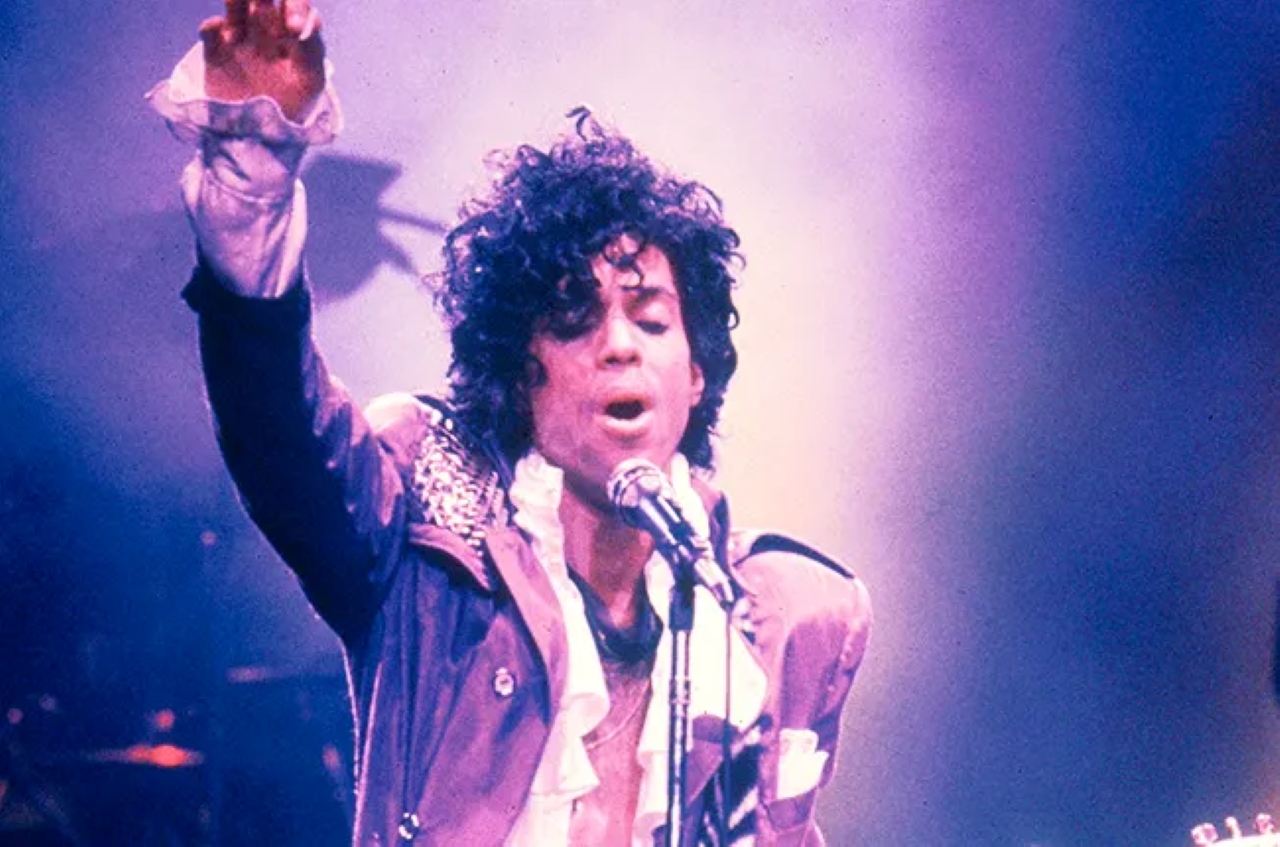🌌 A Summer Like No Other
In the summer of 1984, the airwaves belonged to one man: Prince. He wasn’t just competing for chart space; he was rewriting the entire playbook. At the center of his dominance was a single unlike anything else on the radio—When Doves Cry. Released in May as the lead single for his Purple Rain soundtrack, it didn’t just climb the charts; it conquered them. By July, it was his first No. 1 hit in America, staying there for five straight weeks. And the strangest part? It had no bass line.

🎶 The Song That Shouldn’t Have Worked
Popular music has rules. One of the most sacred is: never forget the bass. The bass line grounds a song, giving it groove and warmth. But Prince, after recording the full track, listened back and felt it was too heavy. In a moment of genius—or madness—he stripped the bass entirely. What remained was a stark, icy landscape of drum machines, haunting keyboards, and his anguished vocals. Instead of warmth, there was tension. Instead of comfort, there was unease. Against all odds, listeners couldn’t get enough.
🕊️ The Sound of Pain
The lyrics of When Doves Cry cut deep. Prince wasn’t writing a typical love song; he was writing about dysfunction, desire, and the dark edges of intimacy. “Maybe I’m just like my father—too bold. Maybe you’re just like my mother—she’s never satisfied.” Those lines resonated with millions, who felt the sting of family drama mirrored in their own lives. Combined with the barren soundscape, the track didn’t just tell a story—it felt like heartbreak.
🎛️ The Revolution of the LinnDrum
Much of the song’s impact came from Prince’s use of the Linn LM-1 drum machine. While other artists used it as background, Prince turned it into the heartbeat of his music. On When Doves Cry, its sharp, mechanical punches became the skeleton of the track, making the absence of bass even more noticeable—and more powerful. Prince didn’t just use technology; he weaponized it.
🎬 Purple Rain and The Kid’s Confession
The track’s power was amplified by its role in Purple Rain, the semi-autobiographical film. In one of the movie’s most emotional scenes, “The Kid” (Prince’s character) confronts the pain of his parents’ troubled marriage while fighting his own demons. When Doves Cry wasn’t just a soundtrack cut—it was the confession of a man torn between passion and trauma. Fans leaving theaters couldn’t separate the song from the haunting imagery, which made it all the more unforgettable.
📺 A Video That Shocked MTV
The music video for When Doves Cry was as audacious as the song itself. Prince emerged from a purple bathtub, dripping wet, his stare unflinching. Scenes of doves fluttering, intercut with shots of his band The Revolution, created something surreal. At a time when MTV was still dominated by straightforward performance videos, Prince delivered art. Some stations even considered it too provocative, but controversy only fueled the fire.
📀 Breaking All the Rules—and Winning
The absence of a bass line wasn’t just a technical choice; it was a metaphor. By breaking the foundation of pop, Prince proved that rules only exist until someone bold enough rewrites them. Record executives worried that radio wouldn’t play it. DJs thought audiences might find it too jarring. Instead, it became the biggest single of 1984. That same summer, Bruce Springsteen was roaring with Born in the U.S.A., but it was Prince’s stark, minimalist track that haunted car radios and bedroom stereos.
🎸 Prince, the One-Man Orchestra
Perhaps most remarkable is that Prince played nearly every instrument on When Doves Cry himself—guitar, keyboards, drum machine, vocals. He didn’t just write the song; he built it from the ground up like a mad scientist in Paisley Park. To his bandmates, it was intimidating. To the world, it was awe-inspiring. Here was a 26-year-old creating something so alien and yet so irresistible.
🌍 Cultural Shockwaves
When Doves Cry changed the way pop could sound. It influenced the rise of electronic R&B, hip hop production, and experimental pop for decades to come. Artists from Beyoncé to The Weeknd cite Prince as a blueprint. Producers learned that silence could be as powerful as sound, and that leaving space in music could sometimes make it bigger.
💜 The Legacy of a Gamble
Looking back, When Doves Cry wasn’t just Prince’s first No. 1 single. It was a cultural turning point. It showed that innovation could triumph over formula, that daring could beat convention. Every time the opening keyboard riff creeps in, it still feels unsettling—and still irresistible. Prince proved that pop music could be fearless, and that one song could change the entire language of sound.